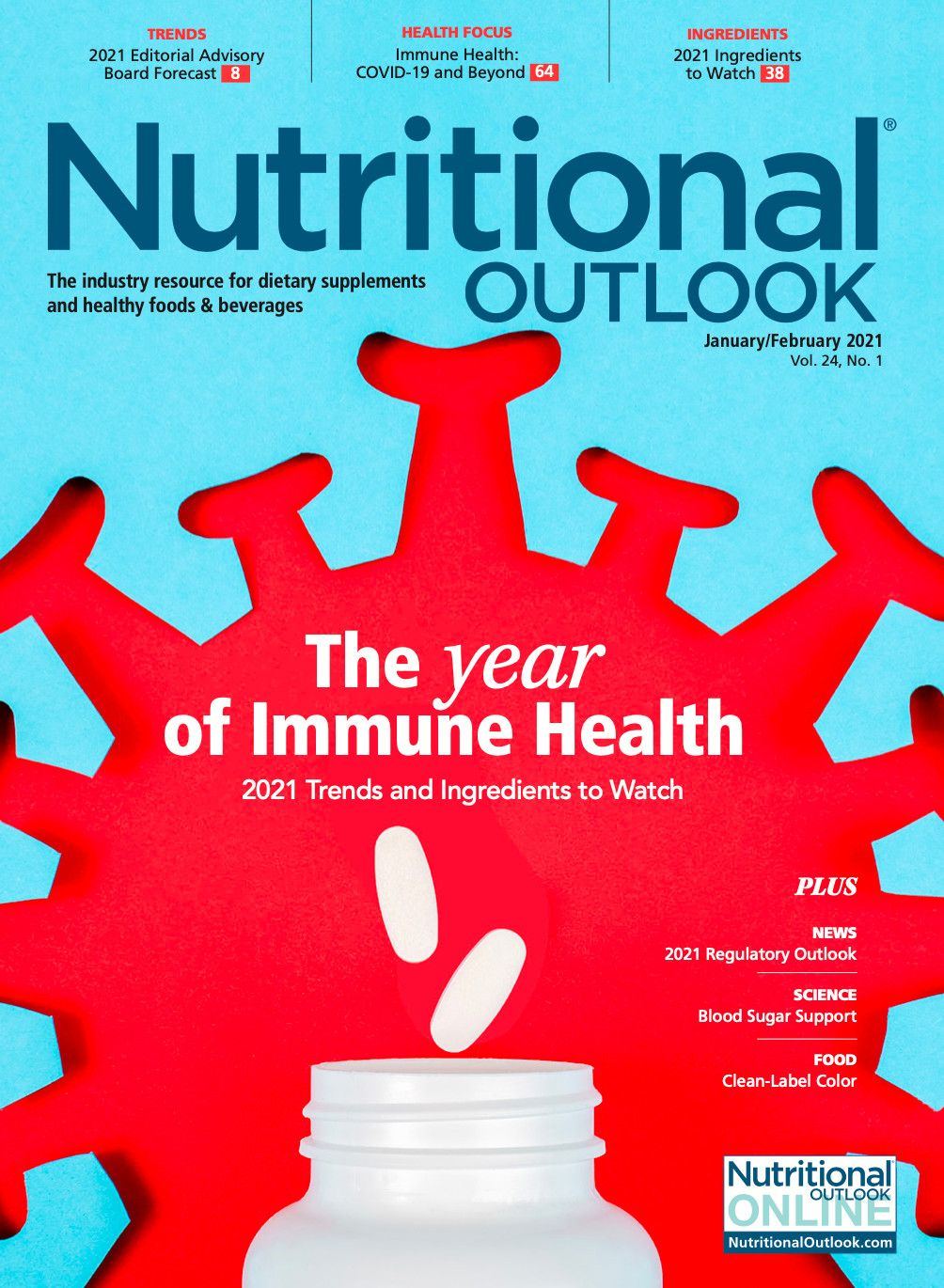Protein drivers in 2021: Innovations in plant-based, dairy, and meat alternatives. 2021 Ingredient trends to watch for food, drinks, and dietary supplements
Protein will continue to be a top-selling ingredients across multiple channels, driven by innovations in plant-based protein and the development of new meat and dairy alternatives.
PHOTO © ESKYMAKS - STOCK.ADOBE.COM

Protein, a product category that is practically synonymous with sports nutrition and fitness, remained among the top-selling ingredients in 2020 despite a global pandemic that closed gyms and indoor recreation for months. According to SPINS data on the 52 weeks ending November 29, 2020, in the U.S. mainstream supplements channel, protein (animal and plant combo) grew 3.4% in sales to $1.47 billion, making it the bestselling ingredient in the channel. The third-highest-selling ingredient in the channel is protein (animal-multi) with $759 million in sales despite a 4% decline in sales growth. Further down the list is protein (animal-general), which grew 9.4% to $482.6 million, and protein (animal-whey), which grew 4% to $269 million.
Accounting for this steady growth during the pandemic is the sheer diversity of uses protein has developed over time, branching away from the image of a large plastic tub of powder to snacks, bars, beverages, and meat alternatives. One of the major growth drivers of the protein space is plant-based protein, which has captured the attention of a large cross-section of consumers who are seeking either to replace or diversify their protein sources.
“2020 was a rollercoaster for food and beverage categories, both in terms of sales and consumption,” says Mark Fahlin, business development, Cargill (Minneapolis). “It’s fair to say that protein remains as relevant as ever during the pandemic. While many categories were negatively impacted in foodservice channels, at retail we clearly saw higher lifts for most categories as compared to pre-pandemic levels. This was especially true in spaces where plant protein features prominently, such as plant-based meat and plant-based dairy, for which the sales lifts were notably higher than retail averages.”
As stay-at-home orders and lockdowns of nonessential businesses brought food service to a halt, home cooking became an absolute necessity. With that came the need for healthier, wholesome meals as families contended with the sedentary nature of working and schooling from home. Protein, being a well-known macronutrient, is as good a place to start as any.
“Protein has always had a natural health halo,” says Mark Cope, applied nutrition manager, DuPont Nutrition & Biosciences (Birmingham, AL). “Meat alternatives are included in the protein mix. Consumer knowledge of meat alternatives as well as consumption of these products has increased over the course of the pandemic.” He adds: “At the same time, some of our CPG customers are launching new SKUs in meat alternatives, moving from burgers into other products like breakfast sausage or deli meats.”
Meat and dairy alternatives simply offer consumers another option. Yes, they can cater to vegans and vegetarians, but now more than ever, consumers are embracing a more balanced approach to food consumption wherein they reduce their intake of animal-based products. For some, this represents a healthier way to eat; for others, it is more sustainable for the environment. It’s notable that the top-selling protein variety in the mainstream multioutlet channel is animal-plant combo as opposed to plant-base protein alone.
“Even though animal-based proteins are still in the majority, I think a shift is taking place especially among younger people,” says Cope. “Millennials are saying they’re interested in eating more plant-based protein—but whether they’re actually doing it is still in transition.”
Ultimately, protein in general carries a healthy connotation. “People look for protein because they believe it’s good for them. It has a healthy halo, and it’s a macronutrient that people think they need in their diet to maintain good health,” explains Cope. “So, people are looking for protein content in foods. Additionally, there’s a health halo around plant-based diets in general. Plant-based foods are perceived as naturally healthy. So, I think that’s where some of this demand for protein is coming. The health halo is so important because if consumers didn’t know about the health benefits of protein before the pandemic, they do now. They’re making sure their family is getting healthy protein products.”
While this presents immense opportunity for suppliers and manufacturers, demand for plant protein also poses a challenge because many consumers may not be willing to compromise on taste and texture. Innovation persists around novel plant-based protein sources, but currently the most prominent and reliable forms of plant-based protein are soy and pea protein. Soy, besides having some of the best name recognition, is also one of the most nutritionally complete plant proteins, containing all the essential amino acids, which is unique among plant proteins. Pea protein, which has grown in popularity, is versatile and offers manufacturers an allergen-free and clean label–friendly ingredient.
Two of the most important formulating factors to consider when it comes to flavor and application development are accessibility and functionality.
“While more consumers may perceive plant-based products as healthier and more sustainable choices, to prevent the category from dissolving into a passing fad ingredient suppliers and manufacturers alike will have to up our game,” explains Melissa Machen, senior technical services specialist for plant protein at Cargill. “For meat and dairy alternatives to truly achieve mainstream appeal, they’ll need to mirror the distinct sensory and textural attributes consumers associate with traditional animal-sourced products, while also reflecting today’s label-conscious marketplace.”
“Fortunately, plant proteins have come a long way in the last decade as ingredient suppliers like Cargill have found ways to improve their solubility, mouthfeel, and stability,” she adds. “As a result, we can now produce dairy and meat-alternative products that are much closer to their animal-sourced counterparts.”
Companies such as Cargill and DuPont are able to achieve success in improving the user experience of plant-based proteins through a holistic approach that draws from their expertise in a number of areas. “The optimum eating experience in meat alternatives goes beyond the protein to the interactions of the ingredients in the overall matrix,” explains Cope. “This is the intersection and interaction of the protein with food-protection products, water, oil, binding agents, etc. As providers of many of these essential ingredients, we are uniquely placed to understand how to make them work together optimally to meet the expectations of consumers. Simply put, in this case, the ‘whole’ is greater than the sum of the parts, and so our work is one of continuous improvement.”
Enduring innovation in the protein space has and will continue to encourage new product development, challenging established brands to improve their formulations while also accommodating a much needed level of differentiation within a saturated product space. Plant-based meat alternatives is where we can expect a lot of this innovation to take place since it’s not quite as crowded as the supplement or bar space, but manufacturers should not shy away from disrupting established product spaces with innovative new protein sources. Consumers are always interested in trying the latest and greatest things.
2021 Ingredient Trends to Watch for Food, Drinks, and Dietary Supplements:
Vitamin C
Melatonin
Vitamin D
CBD
Elderberry
Mushrooms
Ashwagandha
Multivitamins
Protein
Probiotics

Prinova acquires Aplinova to further increase its footprint in Latin America
April 7th 2025Prinova has recently announced the acquisition of Brazilian ingredients distributor Aplinova, which is a provider of specialty ingredients for a range of market segments that include food, beverage, supplements, and personal care.

























